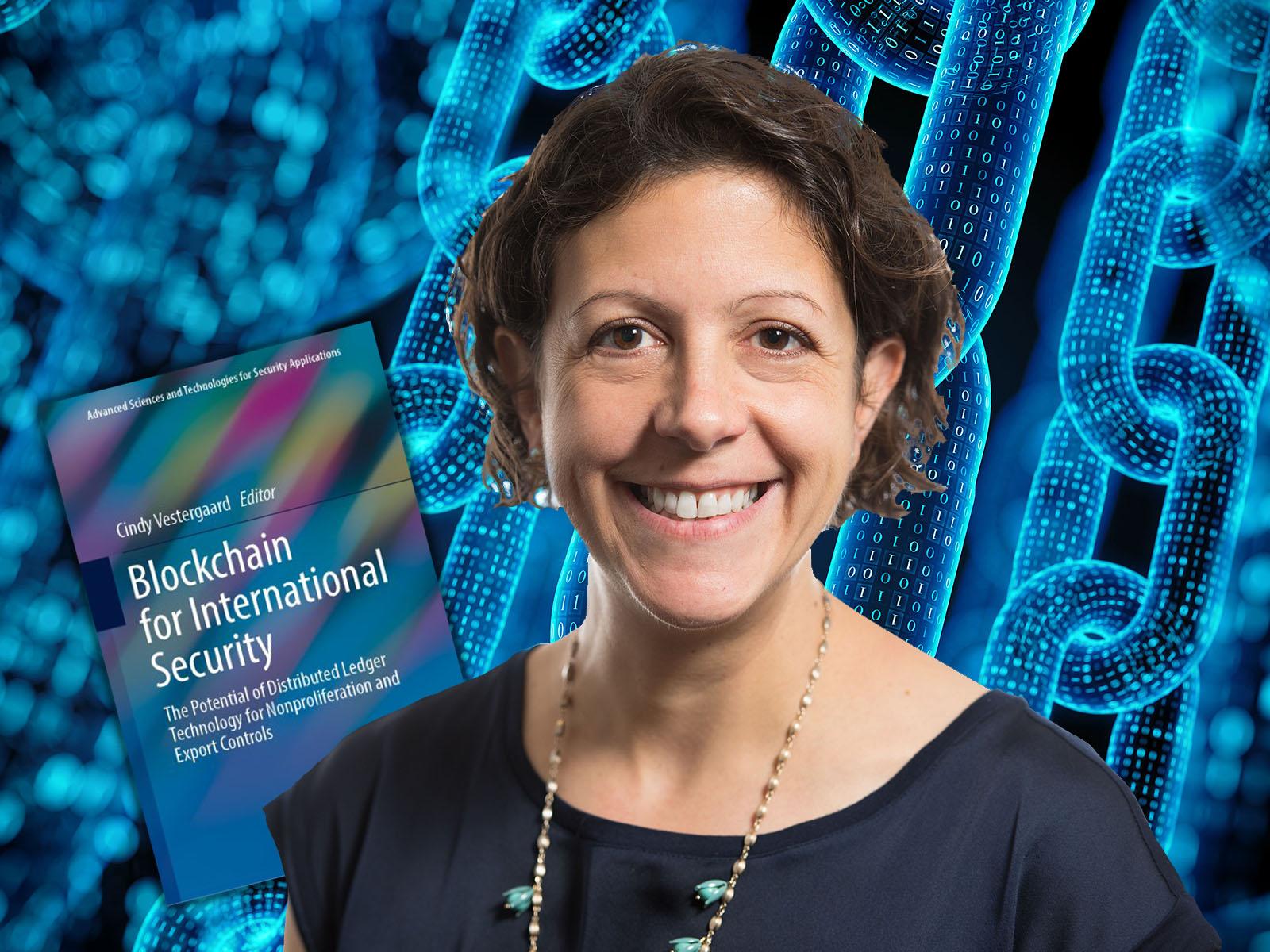Frazar Publishes Chapter on Blockchain, Nuclear Safeguards
Author explores use of distributed ledger technology in international safeguards

In a book chapter exploring blockchain applications, Sarah Frazar explores use of distributed ledger technology for international nuclear safeguards.
(Composite Image by Shannon Colson | Pacific Northwest National Laboratory)
Blockchain technology, the digital ledger behind popular cryptocurrencies like Bitcoin, has growing applications in business, industry, and science—could that extend to nonproliferation?
The chapter “Blockchain Applications for Nuclear Safeguards,” authored by Sarah Frazar, group leader for the Pacific Northwest National Laboratory Global Security, Technology, and Policy group, explores the benefits and challenges of using distributed ledger technology (DLT), the backbone of blockchain, for international nuclear safeguards.
“Monitoring nuclear material inventories and transactions grows more challenging as the number of nuclear facilities and amount of nuclear material that needs to be safeguarded by the International Atomic Energy Agency (IAEA) increases. Blockchain technology has introduced significant operational efficiencies in commercial supply chain industries seeking to monitor other high-value assets. Could the technology do the same for the IAEA and nonproliferation community?” said Frazar.
Edited by Cindy Vestergaard, director of the Nuclear Safeguards and Blockchain in Practice programs at the Stimson Center, the book Blockchain for International Security explores the intersection of DLT and the international security community. Frazar’s chapter focuses on the international safeguards system, the role of the IAEA, and the implications of deploying DLT for safeguards. The IAEA is responsible for providing credible assurance that countries meet their obligations not to divert or misuse nuclear materials and facilities for nonpeaceful purposes. Blockchain presents a combination of modern information technology tools with electronic distributed ledgers to maintain a history of transactions. Frazar’s chapter discusses the IAEA’s core functions and technical objectives and the international community’s perspectives on deploying DLT to meet them.
“Our international community has an ongoing need to strengthen the effectiveness and efficiency of safeguards while improving cooperation and trust in the international safeguards system. DLT offers an opportunity for achieving all of these goals. The chapter focuses on whether the international safeguards community might benefit from DLT deployment without disrupting the existing policy and legal framework governing international safeguards verification activities,” Frazar said.
From safeguards to cybersecurity and grid modernization, researchers at PNNL are exploring the wide range of opportunities and challenges that blockchain presents to different scientific and national security mission challenges.
Published: January 4, 2022